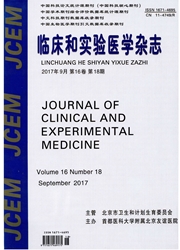

 中文摘要:
中文摘要:
目的探讨战场火炮覆盖应激后,不同位置掩体内兔血清自由基变化规律。方法闽南山地秋季团进攻演习中,根据隐蔽住置设置实验兔空白对照组、反角隐蔽组和迎面角隐蔽纽。基数火炮覆盖应激刺激后6h,存活兔检测血清氧自由基含量,进行统计学比较。结果与空白对照组比较,反角隐蔽组和迎面角隐蔽组一氧化氮(NO)与诱导型一氧化氮合酶(iNOS)的含量显著升高(P〈0.01),总超氧化物歧化酶(TSOD)的含量明显降低(P〈0.01),差异具有统计学意义。与反角近距隐蔽组相比,迎面近距隐蔽组NO显著升高(P〈0.01),TSOD显著降低(P〈0.01),差异具有统计学意义。结论火炮打击后实验兔应激反应强烈,不同位置掩体对存活及血清自由基含量影响显著。
 英文摘要:
英文摘要:
Objective The changes in rule of serum free radicals in rabbits hidden in different position of blindage were studied after the stress of attacking artillery in battlefield. Methods During the autumn regiment attack exercise in South Fujian hilly area, all experimental rabbits were divided into 3 groups ( blank group, reverse hidden group and frontage hidden group) according to their concealed location. Six hours after stress stimulation of artillery, the contents of serum oxygen free radicals in survival rabbits were measured and statistically analyzed. Results The findings in 3 groups were multiply compared. In stress group, the contents of serum iNOS and NO were significantly increased( P 〈0.01 ), but the content of T - SOD was obviously decreased( P 〈0.01 ), and there was significant difference between them. In comparison with reverse hid- den group, contents of serum NO in frontage hidden group were obviously increased( P 〈0.01 ), but the content of T - SOD was obviously de- creased ( P 〈 0.01 ). There was significant difference between them. Conclusion The stress response in all experimental rabbits after striking of artillery is very strong, but different position of blindage can significantly influence their survival and content of serum free radicals.
 同期刊论文项目
同期刊论文项目
 同项目期刊论文
同项目期刊论文
 期刊信息
期刊信息
